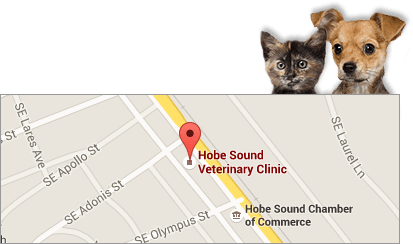For humans, one of the bad parts about spending time outside during warm weather is the risk of coming into contact with poison ivy, oak, or sumac. Did you know that these plants can also affect our pets? It’s not extremely common for pets to develop a reaction to poison ivy, but it’s entirely possible. Read on to find out more.
How to Spot Poison Ivy
When you know how to spot poison ivy, oak, or sumac, you can do your best to avoid it for yourself and your pet. Poison ivy and poison oak have sets of three shiny leaflets—remember the simple rhyme “leaves of three, let them be.” Poison sumac usually grows in swampy or bog-like areas, so you’re more likely to encounter it near a body of water. Sumac plants have clusters of leaflets, so the three-leaf rule doesn’t really apply.
No matter what kind of plants grow in your local area, you can try to avoid any trouble by keeping your pet away from shrubbery and thick forested areas when you’re outdoors. For more information on other risks during the warmer months, check out our article on Beware of Summertime Pests.
Symptoms in Pets
It turns out that our pets are far less likely to experience a reaction to poison ivy, oak, or sumac than we are, and for one simple reason. They’re covered in fur, which largely blocks the irritating agent—an oil called urushiol—from reaching their skin. It is possible, though, for your pet to develop a rash on exposed areas of skin that aren’t completely covered in fur. The main sign is, of course, a red, bumpy rash, and you’ll probably see your pet scratching or biting intensely at the itchy area. It’s possible for blisters to appear if the problem persists.
Treating Poison Ivy Rashes
If your pet suffers a rash caused by poison ivy, oak, or sumac, you’ll want to bathe them with a pet-safe oatmeal shampoo. (Make sure not to get any in your pet’s mouth or eyes.) That is usually enough to get rid of the urushiol substance and help your pet feel more comfortable, but let your vet know if your pet is still itchy. And remember to wear gloves while bathing your pet so that you don’t get any of the irritating substance on your own skin.
If you suspect your pet is itching because of contact with poison ivy, oak, or sumac, let your veterinarian know. We’re always here to help!
Our Advice on Poison Ivy and Pets in 2024
Can pets transfer the urushiol oil from poison ivy, oak, or sumac to humans through contact with their fur?
Yes, pets can transfer urushiol oil from poison ivy, oak, or sumac to humans through contact with their fur. While pets are less likely to develop a reaction due to their fur coverage, the oil can adhere to their coat and remain potent. If humans then touch the contaminated fur, the oil can transfer to their skin, potentially causing a rash. It is advisable to wash pets thoroughly with a pet-safe shampoo if they have been in areas where these plants are present to prevent the spread of urushiol oil.
How long does the urushiol oil typically remain active on a pet’s fur, and what is the best way to remove it to prevent further irritation?
Urushiol oil, the irritant found in poison ivy, oak, or sumac, can remain active on a pet’s fur for an extended period, often several weeks, unless it is removed. To effectively eliminate urushiol oil and prevent further irritation, it is recommended to bathe the pet with a pet-safe oatmeal shampoo as soon as possible after exposure. This type of shampoo can help soothe the skin and remove the oil. Additionally, wearing gloves during the bath ensures that the oil does not transfer to human skin.
Are there any specific dog or cat breeds that are more susceptible to developing a reaction to poison ivy?
Generally, susceptibility to poison ivy, oak, or sumac is not significantly influenced by dog or cat breed. The primary factor affecting the likelihood of a reaction is the amount of fur coverage. Pets with shorter or less dense fur are more prone to skin exposure and, consequently, might develop rashes more readily if their skin comes into direct contact with urushiol oil. Regardless of breed, it’s essential to keep all pets out of areas known to harbor these plants to minimize the risk of exposure.
How can pet owners differentiate between a rash caused by poison ivy, oak, or sumac and other skin irritations?
To differentiate between a rash caused by poison ivy, oak, or sumac and other skin irritations in pets, observe the rash’s appearance and the pet’s recent activities. Rashes from these plants typically present as red, bumpy, and may form blisters if severe. They usually appear on areas of less fur coverage, such as the belly or face. Consider whether the pet has been in areas likely to have these plants. Other irritations might be more spread out, less defined, or associated with changes in diet or new products.
Can the smoke from burning poison ivy, oak, or sumac plants cause respiratory irritation or other health issues for pets who inhale it?
Yes, the smoke from burning poison ivy, oak, or sumac plants can cause significant respiratory irritation and other health issues for pets. When these plants burn, urushiol oil becomes airborne, which can irritate a pet’s respiratory tract, leading to symptoms such as coughing, wheezing, and difficulty breathing. Inhalation of this smoke can also cause more severe reactions, including inflammation of the airways and lungs. It’s crucial to keep pets away from areas where these plants are being burned to prevent exposure and potential health complications.
For comprehensive care and Veterinary Wellness & Pet Vaccinations, contact us, your local animal clinic in Hobe Sound, FL!




